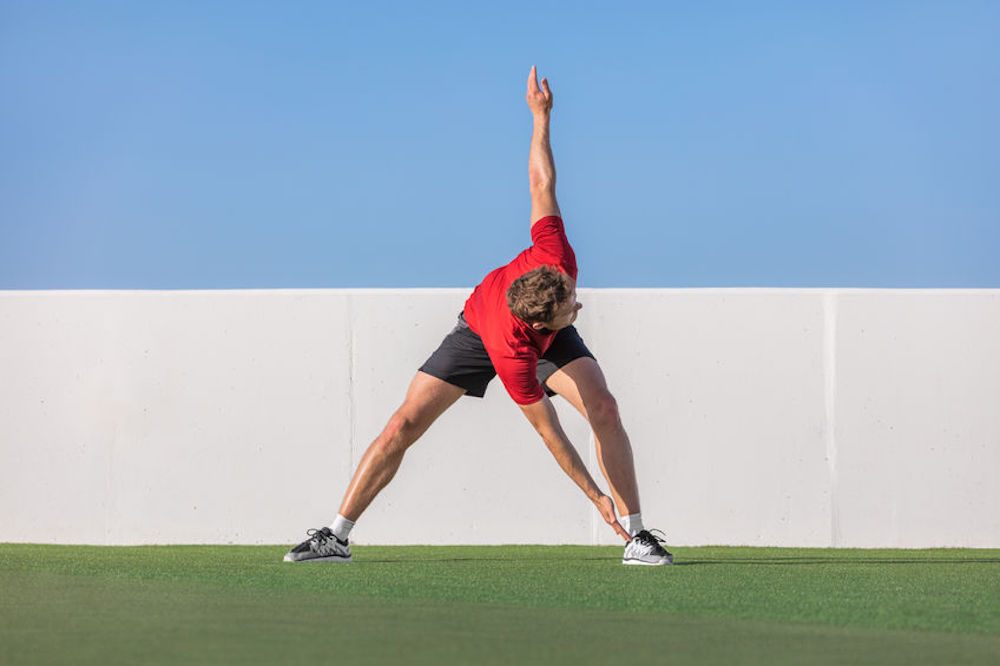
How to NOT Stretch for a Workout
It’s always remains important to get the most of an effective workout, but certain protocols should never be avoided. Rushing to get to the gym or having a small window of time to exercise can cause some people to short change their workouts by forgetting to stretch.
Being pressed for time or anticipating on finishing your workout on time can cause a misjudgment on properly warming up before lifting weights to prevent an injury from occurring.
Stretching not only avoid these injuries, but it also ensures that your muscles are flexible to perform exercises under a full range of motion.
It’s not only mandatory that stretches are to be performed before exercising, but the correct types have to be utilized to make sure you’re working out optimally
In this article, we’re going to briefly discuss the type of stretches you can do and how to properly do them.

How to Properly Stretch
When you think thinking of stretching exercises, you may visualize fully extending your limbs until you feel a tension in the muscle, then briefly holding the position for a second or more.
Stretches are actually categorized into two different types, one that applies to movement or dynamic stretching. Static stretching is when the muscle is extended or flexed under tension.

A leg stretch like this one would be an example of what most people think of when it comes to stretching. This is a static stretch.
Static stretching is familiar with the general population as most group training exercise programs emphasize stretching for better flexibility. This is usually performed by high-intensity training, yoga studios, or pilates instructors at the start of their classes.
These stretches differ because they each serve different purposes.
Dynamic stretches are active motions that increase blood flow and temperature to a particular area of the body.
This is why you should be using dynamic stretches to start your workouts because they prime the muscle group you’ll be working on that day.
When you do static stretches, you prime the joint and muscle fibers around it by contracting the muscle.
To avoid the worst injuries that you can inflict on yourself, this is the order you should be using when stretching:
- Proper Warm Up: A warm can be anything from jumping jacks, jumping rope, running in place, or running on a treadmill. Anything that triggers your heart rate up to go above normal resting levels (75 beats per minute). Do this for 3-5 minutes.
- Dynamic Stretching: You want to take that pulse you got from your warmup exercise and start doing some kind of moving exercises. These would be anything from jumping squats, walking lunges, arm circles, shoulder rotations, etc. Do a set of those exercises for a few minutes and get into your main workout.
- Weightlifting/Body Lifting Exercises: Following a dynamic stretch, weightlifting/body weight exercises are performed to concentrate on the muscle group(s) you’re working on that day. Weightlifting should be done in this order so that you’re not fatigued from your warm up and you’re better prepared for an intense cardio session shortly after.
- Cardio: If you’re trying to lose fat quickly, high-intensity cardio sessions should be added after your weightlifting routine. This type of cardio is only needed for about 10-15 mins because of how effectively you can burn calories in a short period time.
- Static Stretching: The end of your workouts will end in a static stretch as these stretches help to contract the muscles and get keep the joints extended. Static stretches should be used to cool down as the muscles you’ve been exercising have a sufficient supply of blood that can extend functionality and range of motion. Doing this in the long term can be highly beneficial to those who regularly lift weights.
If you’re looking for a good read on functional stretching exercises to make your hips and the rest of your joints more flexible, be sure to check out it here. These exercises can improve posture and your overall mobility.
The Wrap Up
Proper stretching should be done before you start exercising (no matter what time of the day it is). You should be performing dynamic movements before your weightlifting to prevent injury and avoid stretching cold muscles. Performing static stretches before exercising can affect both your long-term strength and overall performance in the gym.
